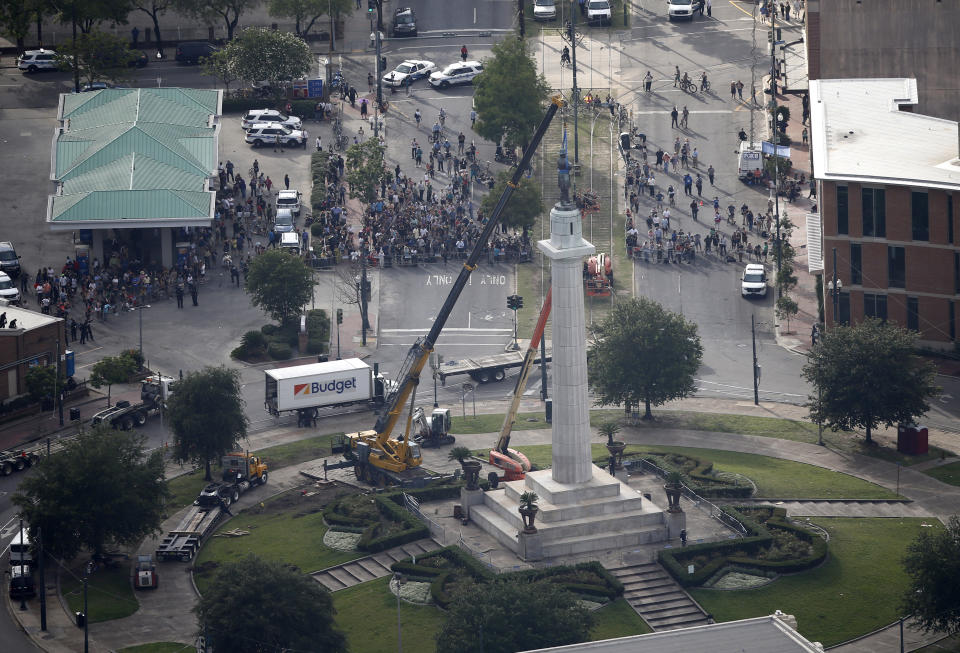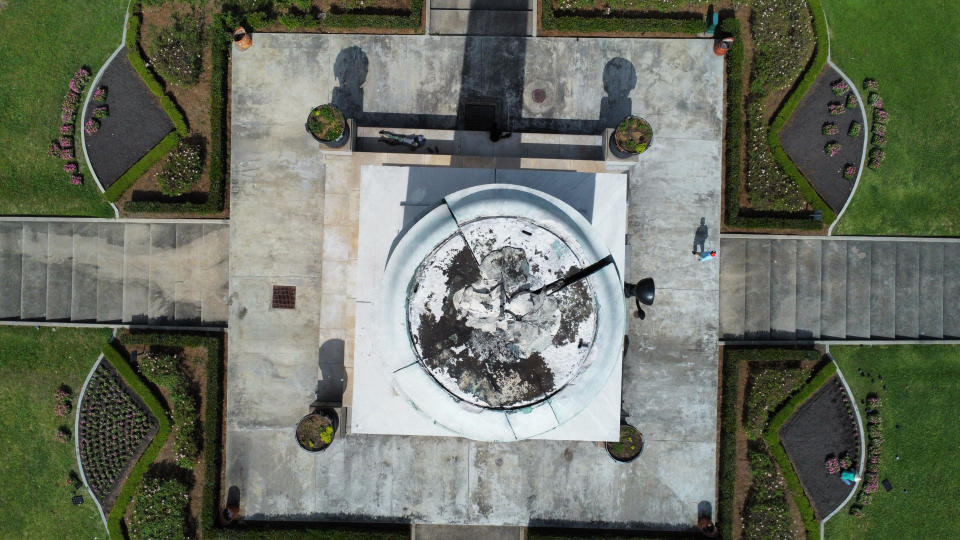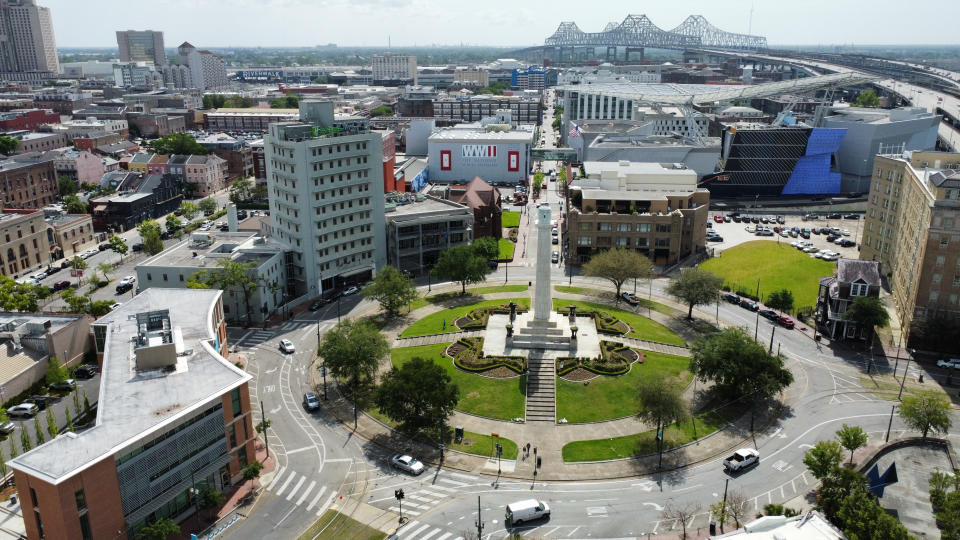More confederate symbols fading in Louisiana
- Oops!Something went wrong.Please try again later.
NEW ORLEANS (AP) — Lee Circle — a round patch of New Orleans green space where a larger-than-life statue of Gen. Robert E. Lee once loomed over St. Charles Avenue — was officially been renamed Harmony Circle on Thursday as the City Council continued to eliminate memorials honoring Confederate leaders.
The small urban park, originally Tivoli Circle, had been called Lee Circle since the 16-foot (5 meter) bronze likeness of Lee was erected atop a 60-foot (18 meter) pedestal in 1884.
Unanimous approval to change the name of the New Orleans park came a day after officials in southwest Louisiana's St. Landry Parish voted to to remove a 102-year-old Confederate monument from the parish courthouse grounds in the city of Opelousas. Acadiana region news outlets report that the 10-3 vote followed sometimes emotional debate.
In New Orleans, the statue of Lee was removed in 2017 — the last of four Jim Crow-era monuments taken down in New Orleans under then-Mayor Mitch Landrieu following two years of political and legal battles. Opponents of removal have defended the icons as historic memorials to Southern heritage. But moves to eliminate Confederate memorials in Southern cities had gained impetus after nine black parishioners were fatally shot in 2015 by an avowed racist at a church in Charleston, South Carolina.
The renaming of the circle comes as part of a continuing New Orleans city government project to rename streets bearing the names of Confederate leaders. Last year, for instance, Jefferson Davis Parkway, named for the president of the Confederacy, was renamed to honor Norman C. Francis, the long-time former president of Xavier University of Louisiana, a historically Black institution.
While the circular park, covering an area about the size of a small city block, will be called Harmony Circle, the street encircling the park where it separates sections of St. Charles Avenue, will remain Tivoli Circle. Researchers determined the street’s name was never changed from Tivoli, although street signs that are still in place identify the street as Lee Circle.
Although the once-heated issue has cooled in New Orleans, the fate of the memorial in Opelousas may not be settled. News outlets said there may be legal action to halt monument removal.
The Advocate reported that the monument's supporters said its purpose was nothing other than honoring named and unnamed veterans of the Confederate Army who fought in the Civil War.
St. Landry Parish resident George Gremillion said the monument provides a place to honor war dead who wound up in mass graves.
“To the wives, the daughters and the sisters, they put together their efforts and constructed this monument downtown here to honor, to have a place for them to say thanks to their loved ones," Gremillion said. “When all you guys go out there and see your parents and grandparents’ headstones there, you can go honor them. A lot of families can’t say that.”
The St. Landry monument was erected in February 1920 by the United Daughters of the Confederacy’s Louisiana division and Gordon chapter, nearly 55 years after the Civil War ended.




